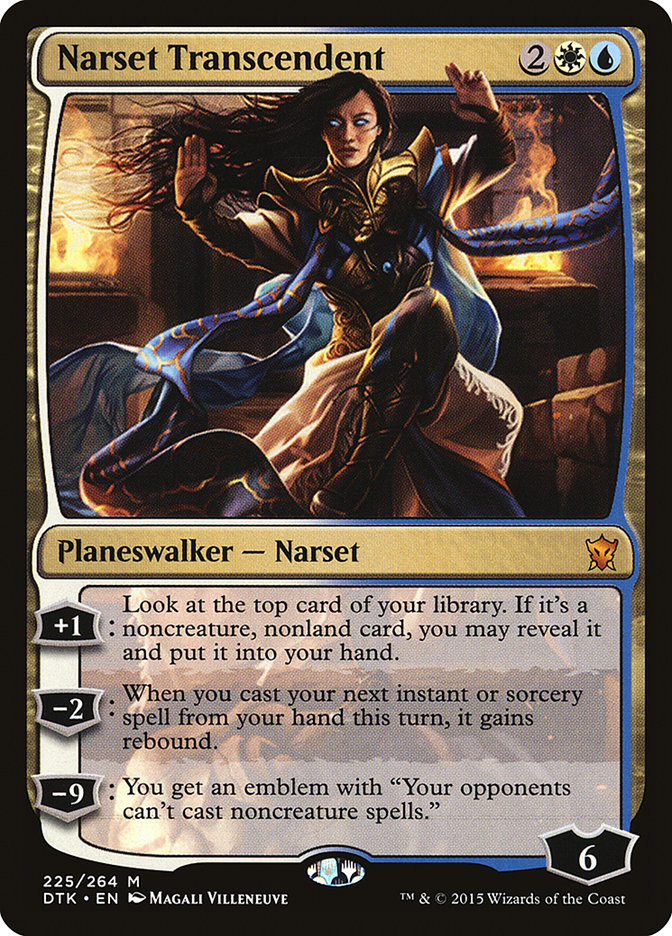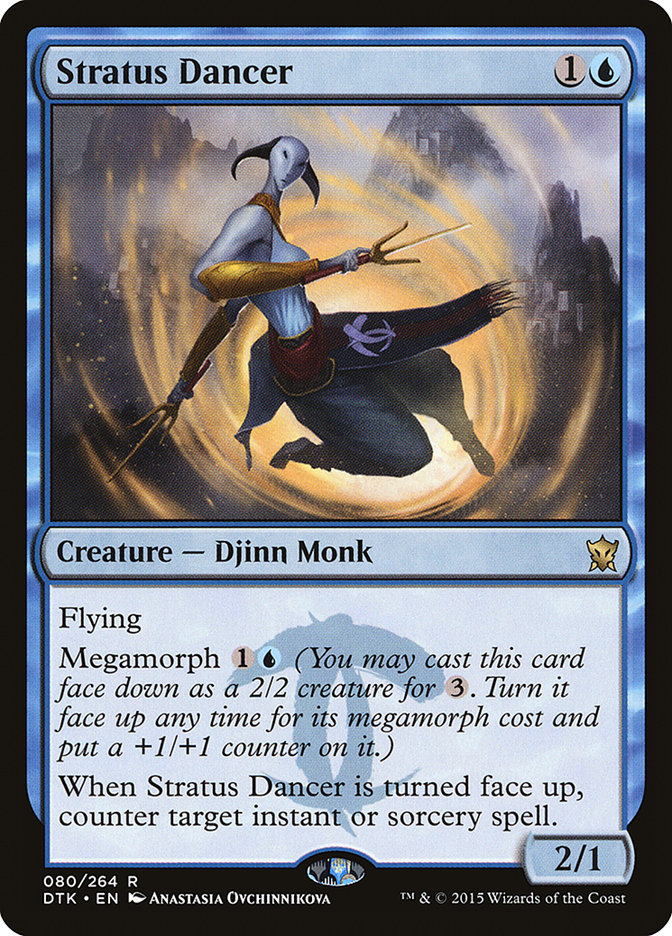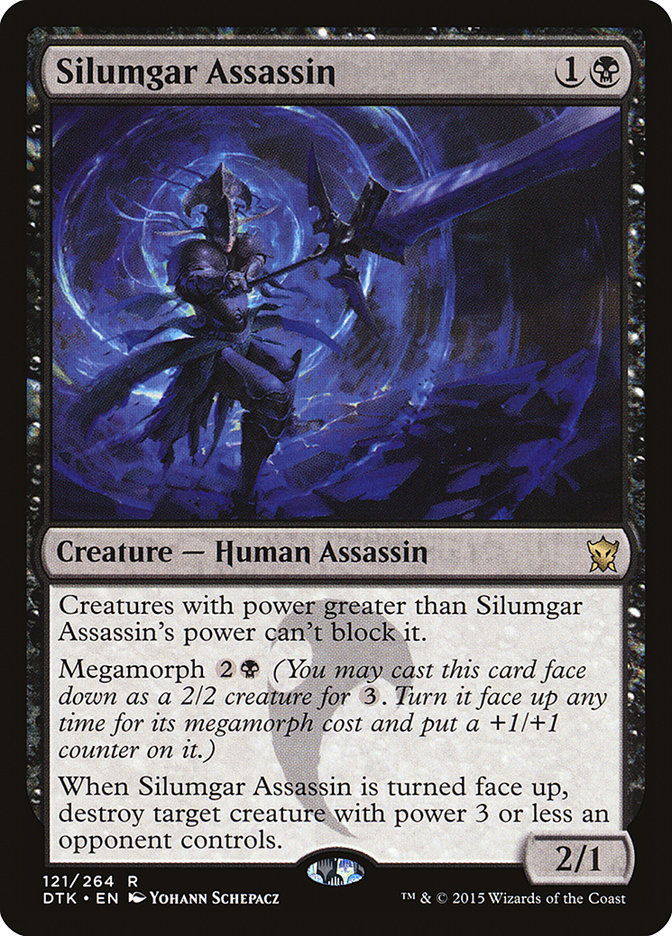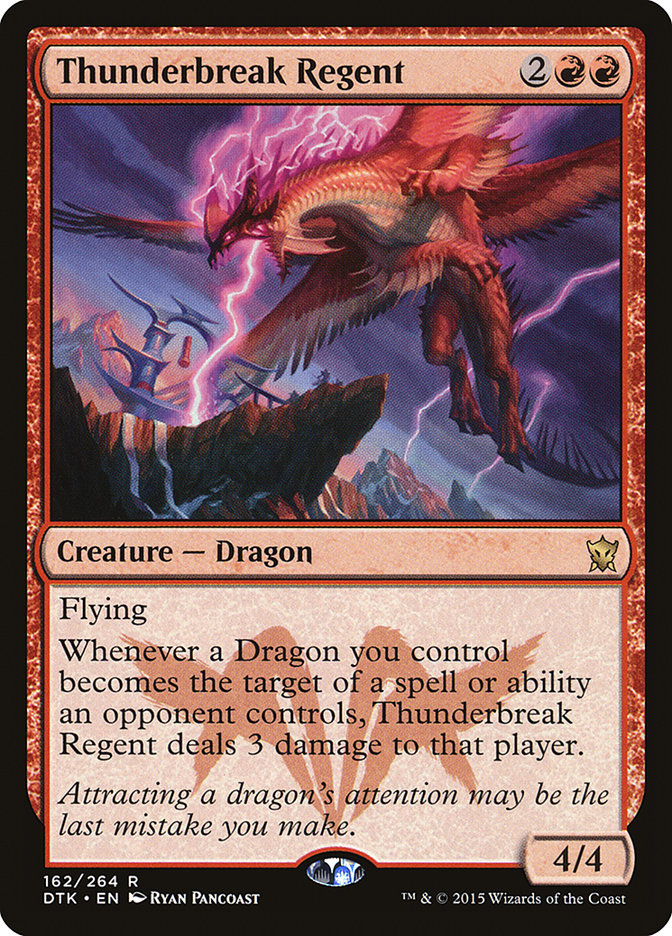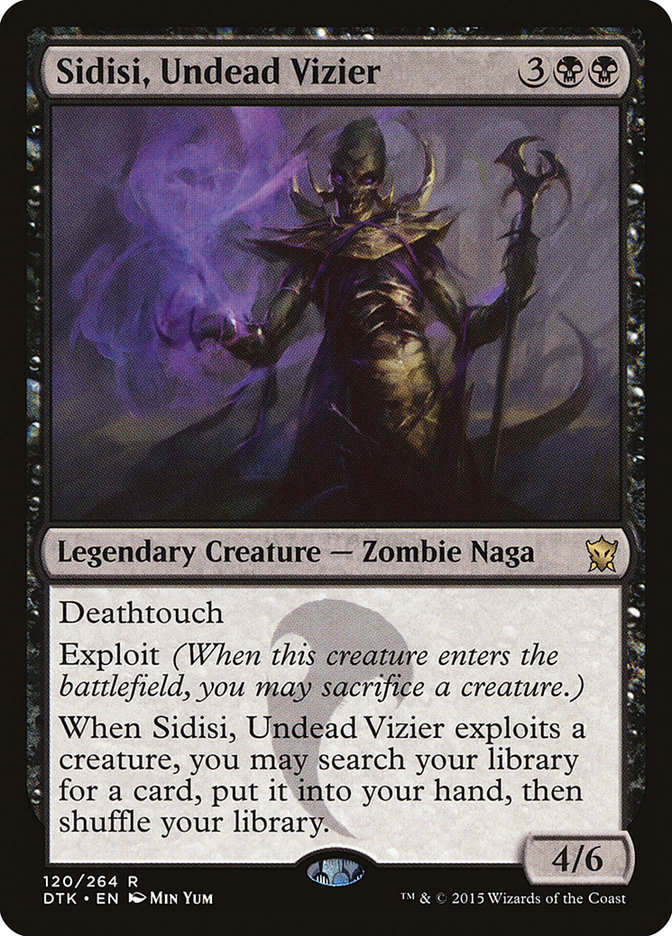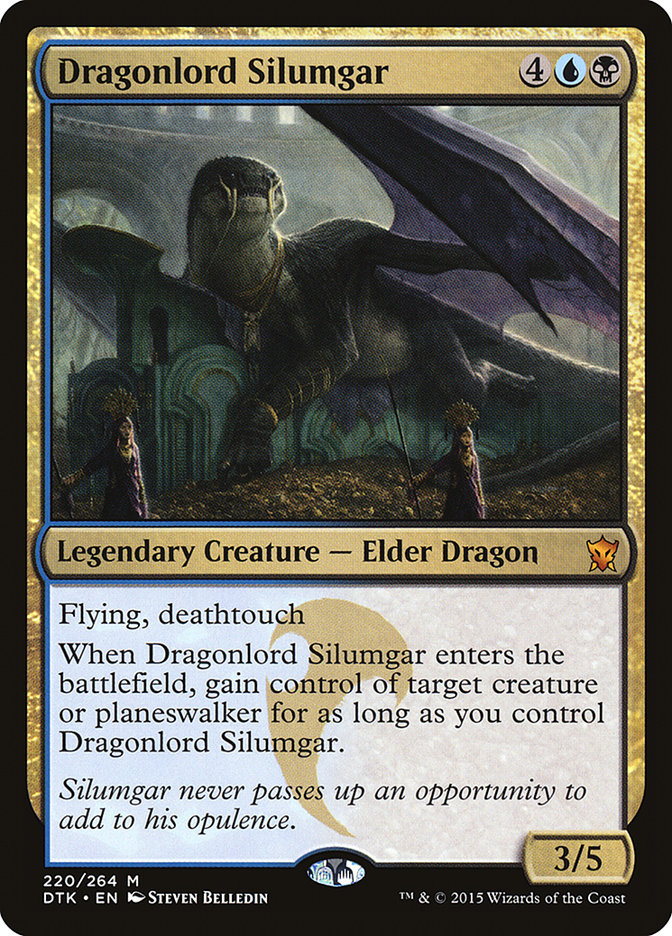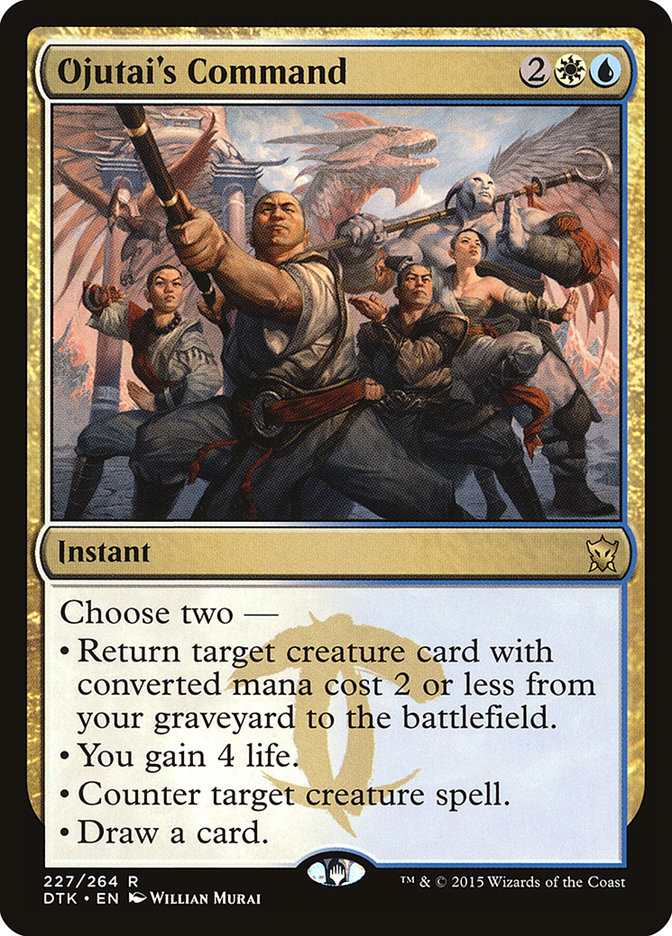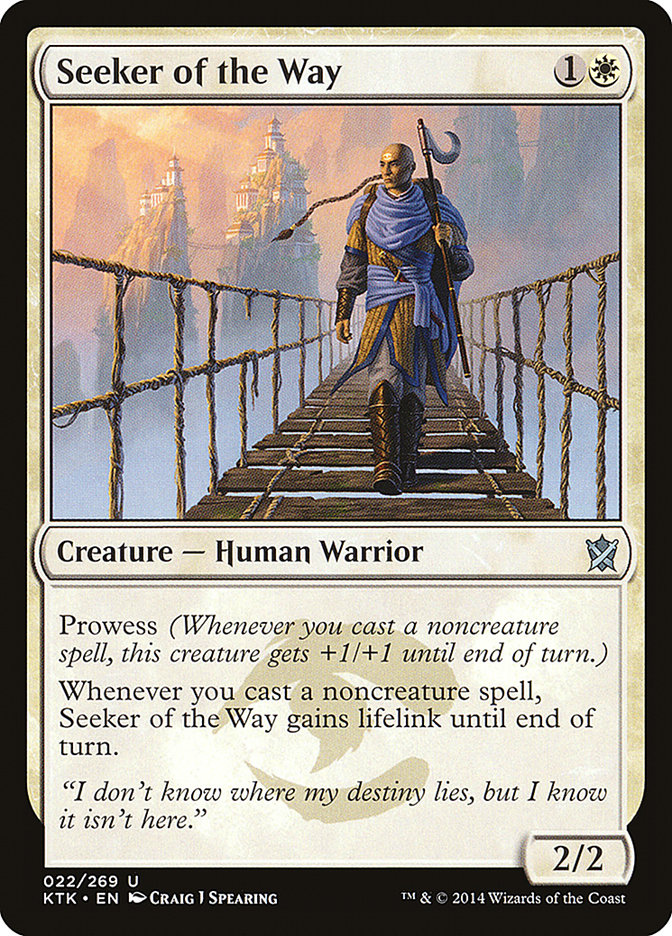It seems like only yesterday that I was pouring over the Fate Reforged spoiler, looking for hidden gems in both Standard and Modern and evaluating how the
new set would change Limited. The early hype seems to just recently be fading with the initially unheralded Outpost Siege making the largest immediate
impact on Standard. But with a quicker than average turnaround between sets, we have already entered into spoiler season for Dragons of Tarkir. You know
what that means….
Cue the in-your-face guitar riff and inexplicable explosions.

CHOOOOO CHOOOOO!!!!!!! ALL ABOARD!!!!!!!!!!!!!!!!!!!!!!!!!!!!
This is when we writers really demonstrate our value to the company by overhyping every card in the set, so you, the gullible readers, will preorder as
much as possible while Pete Hoefling, Evan Erwin, and Cedric Philips sit around a solid gold table eating caviar-stuffed lobster and cackling so hard that
their monocles fall out. So without further ado…
What? That is not how it works at all? The writing staff works hard to provide you with the best content they can, but Magic is very hard and we are as
likely to make mistakes as anyone else? And Cedric lives thousands of miles away from Pete and Evan, so how would he dine with them in such an opulent
fashion?
Well that doesn’t play nicely with my conspiracy theory, so I am just going to ignore it. Plus, trains are sweet. Who doesn’t like playing with trains?
So here are the cards I think are definitely going to be the next Tarmogoyf and the cards that are going to suck but you should buy anyway so I get a
raise. Or, you know, my honest impressions of the early spoiled cards.
I’ll begin with what will undoubtedly be the most talked about card in the set this week. New planeswalkers always bring tons of speculation because they
are notoriously difficult to evaluate. Not only do you have to judge how powerful the individual abilities are, you have to determine how they work
together to form a cohesive card and what the most likely lines of play with those abilities are.
The most striking feature of Narset is her incredibly high starting loyalty. Most four-mana planeswalkers enter the battlefield with three or four loyalty,
while this one begins with six. That means she is likely to stay in play for a while and generate some value so long as her abilities allow it to.
Fortunately, the first ability is indeed value-generating. While not particularly powerful, it should equate to about half a card in the right deck, which
is enough to dominate a game over time. Limiting the number of creatures and playing a long game also indicate strongly that Narset fits mainly into a
control shell.
The second ability I think will ultimately prove disappointing. It can fit nicely into the same control shell that Narset’s high loyalty and first ability
want to be in, but it does not play well with counterspells, which are very important to the control decks in this format. Rebounding a removal spell is
reasonable, but it is not much better than the +1, since three loyalty is not much worse than half a card. The most common activations are going to rebound
a card draw spell like Dig Through Time to put a game out of reach for the opponent, but Narset’s +1 will do that eventually, so I do not see much added by
this ability.
One wrinkle it does add is in conjunction with wrath effects like End Hostilities. Control decks use wraths to catch up from behind, but they often leave
themselves vulnerable the turn they cast them because they are forced to tap out on their own turn. If the opponent can rebuild quickly with multiple
threats or a single very powerful one, the control deck can often get caught unprepared. With a second sweeper waiting to rebound, you will often force
your opponent to do nothing on their turn, affording you the time to untap and assume complete control.
Narset’s ultimate is a game-winner in control mirrors, but it is lackluster against more aggressive strategies, and that’s fine. Ultimates are the least
relevant abilities when evaluating a planeswalker, since the cards other abilities should provide give an insurmountable advantage by the time you would
activate them.
In sum, I think Narset will function as a solid card advantage piece for control decks, likely supplanting something like Jace’s Ingenuity. However, I do
not think it is powerful enough to cause players to abandon the UB base because the answers in blue and black are so strong. If it sees immediate play, I
believe it will be in an Esper shell.
In a vacuum I really love this card. It is aggressive, flexible on the curve, and provides some interaction for an aggro deck without detracting from the
primary initiative – getting them dead. Even in a format glutted with powerful options at three mana, the fact that this one doubles as a reasonable
two-drop makes it a solid option because it will increase your ability to curve out without sacrificing much overall power.
In the context of current Standard, I am much more skeptical of this card. The Megamorph ability is something you will want to hold back on to gain maximum
value, which means you really need the 2/2 body to do something relevant in the meantime. That is not likely to happen in this format where Sylvan Caryatid
and Courser of Kruphix are there to lock up the ground.
Against the Courser decks (Abzan and Devotion mostly), you will look to aggressively flip this and start attacking with a 3/2 flier as soon as possible.
That means on turn 4 you will really want a good two-mana spell to use your mana alongside the morph cost.
Fortunately, such a card already exists in Disdainful Stroke. When on the play, casting Stratus Dancer face down on turn 3, and then using turn 4 to
establish a clock and counter an opposing Siege Rhino, Polukranos, or Whisperwood Elemental is a great opening, especially if preceded by a two-drop,
perhaps another copy of Stratus Dancer. Disdainful Stroke fits nicely into the type of tempo-oriented gameplan that Stratus Dancer wants to play anyway, so
the fact that they curve so nicely together is a great sign.
It is also important to note that while the body matches up poorly against Drown in Sorrow, the ability gives you some play against the card that has been
the bane of low-curve aggro decks in this format.
I see Stratus Dancer easily slotting in as a role player in Jeskai decks that want to take a more aggressive tilt, with the potential to really take off
after Theros block rotates. With a card as flexible as this one, there are bound to be more layers to it than we can examine on the surface, so I look
forward to exploring its full potential once I start testing for the new Standard format.
On the surface this card looks very similar to Stratus Dancer, but in practice they are very different. The body granted without using Megamorph on
Silumgar Assassin is significantly worse than Stratus Dancer, since its evasion ability is much less useful than flying. However, the Megamorph trigger is
much better in this creature-dominated Standard format. It is also an ability that you will be able to use more aggressively, meaning you will not be stuck
with a measly 2/2 as often when you try to extract the most possible value from the card.
That the ability does not kill Siege Rhino is a significant strike against it, but not a total loss. It kills all of the early threats from R/W Aggro as
well as Courser of Kruphix, which is more important than Rhino in midrange mirrors. As such, I think this card is well-suited for the midrange decks in
this format. It can gain some card advantage while applying pressure on your opponent, and it gives some needed earlygame against aggressive decks with the
option of playing it on turn 2 to trade with an early creature.
So despite the evasive ability, I see Silumgar Assassin playing out as more of a defensive creature in decks where the option to become aggressive is
valuable. This format has certainly rewarded decks with such tactical flexibility, so I would not be surprised to see this card exceed my expectations.
Good stats, evasion, and an aggressively slanted ability that provides resilience to removal? Thunderbreak Regent has a lot going for it. It will certainly
be competing with Ashcloud Phoenix, as the card are very similar, but the Regent’s extra toughness provide a real advantage in R/W mirrors.
Ashcloud Phoenix is unable to play good defense against the early creatures in this format unless your goal is to simply trade it and the ensuing morph for
two creatures. Regent can hold off an opposing attack and then immediately start attacking, effectively reversing the texture of the game.
Unfortunately, its stats are such that it is vulnerable to a majority of the removal spells in the format: Abzan Charm, Valorous Stance, and Stoke the
Flames to name a few. This means that in the current Standard format, Regent makes for an unreliable defender, so you would rather place it at the top of
the curve in an aggressive deck. Such decks may not have a high enough land count to consistently leverage Ashcloud Phoenix, so the ability on Regent will
be better at providing reach. They also may not have enough lands to consistently cast the more powerful Stormbreath Dragon. Unfortunately, these low-curve
aggro decks have not been competitive in this format with plenty of powerful tools to fight them. As such, I do not see Thunderbreak Regent making a
significant impact in the format unless there is a large-scale shift in the metagame.
After Stratus Dancer, this is the card that I find most exciting from the recent spoilers, and if I am being objective, this one is likely the better of
the pair. Tutoring is incredibly powerful, and this format offers plenty of fodder to sacrifice and plenty of powerful cards to find.
The most natural home for Zombie Sidisi is next to Whip of Erebos. Whip decks have fallen out of favor recently, but this card may be powerful enough to
bring them back into the fold. Sylvan Caryatid, Satyr Wayfinder, Hornet Queen, and Sidisi, Blood Tyrant all provide marginal creatures to sacrifice, and
the demonic tutor is excellent in a deck that tends to be threat light. The first trigger can find a Whip of Erebos, and if the body goes to the graveyard,
it can be recurred it to keep the gas flowing. It is mildly unbelievable how well the cards seem to work together.
Having a powerful tutor effect also allows you to effectively play more removal spells than you typically have the space for, since Whip of Erebos decks
need to devote so many slots to their engine. Having more virtual copies of Hero’s Downfall or even Thoughtseize will help ensure that your engine takes
over the game undisrupted by pesky enchantment removal or huge bombs like Ugin.
This card does not immediately solve the issues Whip decks have against pure control, but if they solidify the rest of your matchups, it will free space in
the sideboard to combat control and let you access those key sideboard cards more often, thus indirectly making the matchup better. I will definitely be
testing some Whip decks with this in it, and you should be prepared for them during the first weeks Dragons of Tarkir is legal.
While a six-mana creature that dies to spot removal without providing immediate value, I think the ability on this card is powerful enough that it will see
play. If you take a Courser of Kruphix, Siege Rhino, or Stormbreath Dragon they absolutely will need to answer it immediately. So really we just need a way
to clear a small time window for the mind control to generate an insurmountable board advantage…
“Hey there, remember me?”
Taking their removal spell and then playing Dragonlord Silumgar will run away with the game often enough that the risk of playing a six-mana do-nothing is
worth it. The effect is just so powerful that it demands play, much like Baneslayer Angel still saw play in the face of Doom Blade. And it is not as though
they can always hold their removal spell to deal with your Mind Control dragon. In a Sultai shell, you can easily bait their removal with Sidisi, Blood
Tyrant and Courser of Kruphix before slamming this haymaker.
As for some other cool options with Dragonlord Silumgar, you can take their creature and sacrifice it to Sidisi, Undead Vizier to mitigate the risk of a
removal spell, or you can protect your mind control with Stratus Dancer. Of these two synergies, the former seems the more powerful to me since the two
cards fit in the same midrange good-stuff style of deck, while Stratus Dancer, as I discussed, plays much more aggressively. Still, Dragonlord could
function as a great sideboard card for a Stratus Dancer deck against opposing midrange decks, where a haymaker effect is excellent.
It is important to be wary of splashy effects that rarely work out the way they do in theory, but when the effect is as powerful as this one, you should
take notice.
We’ve now come to a card that has generated some hype in the early days of this spoiler season. Heralding the return of a powerful and popular cycle of
cards from Lorwyn, Ojutai’s Command is certainly reminiscent of former Standard all-star and now Modern staple, Cryptic Command. Let me make one point
clear:
This is not Cryptic Command.
But that is an impossible standard to meet, so you should evaluate this card independent of its famous predecessor. The last three of its modes are
straightforward, and I imagine the most common modes chosen for Ojutai’s Command will be Remove Soul (Essence Scatter for the young’ins) and draw a card.
What is really going to determine this card’s fate is the utility of the first mode.
By blanking any of the four modes on a command, you halve the number of possible options from six to three. While this does not exactly translate to
halving its utility (since presumably the eliminated mode is the worst of the four, and thus the least used), it is a significant loss for a card that
gains much of its value from flexibility.
So what creatures can we effectively recur with the first mode?
Upon first inspection, I see three strong candidates:
All three of these creatures can function well in an aggro-control shell that can best take advantage of the options a command provides. The most obvious
such home is Jeskai, but with Valorous Stance and Ojutai’s Command to answer large threats, it’s possible that the red is unnecessary and you can play a
smoother manabase. Monastery Mentor and Brimaz, King of Oreskos provide some great three-drops, and Wingmate Roc is a potential inclusion for a lategame
threat.
Having a gain life mode also makes Ojutai’s Charm appealing for control decks, but I’ll let Jim Davis handle that one.
With the Season One Invitational in Richmond being held on Release Weekend for Dragons of Tarkir, getting started with testing the new cards has never been
more important for us SCG grinders. However, I have to spend my time preparing for GPs in Miami and Cleveland for the next two weeks in my hunt for Silver.
I’ll be delving deeper into the new cards after that when we should have the entire spoiler to work with, so look out for an update on these musings then.


